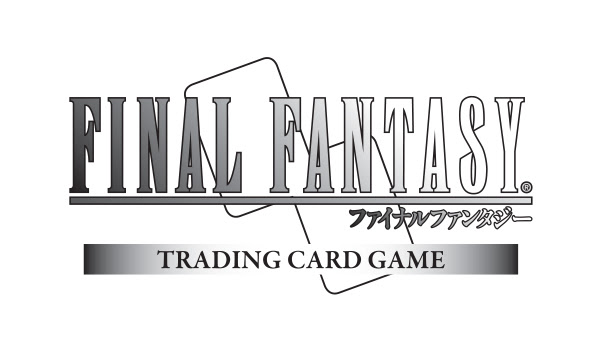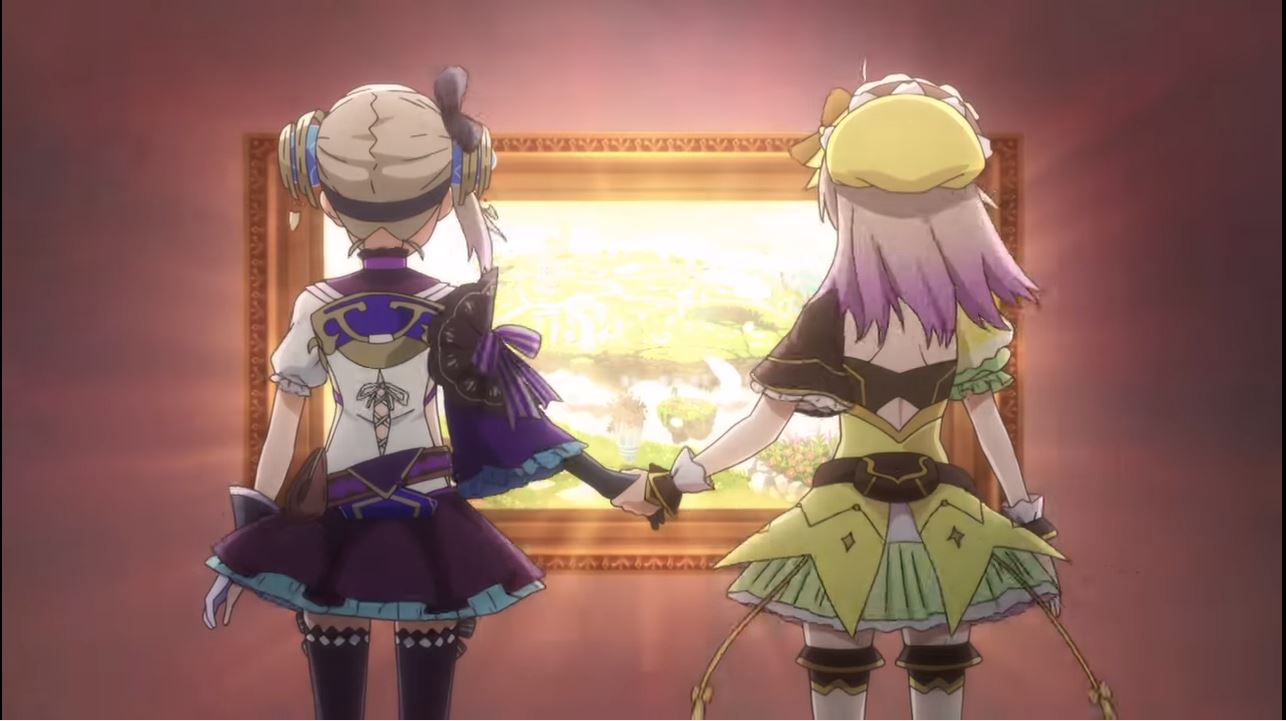by Andrew Skelton (Outfoxed)
We here in the United States might remember Atelier Iris: Eternal Mana as the game that started the Atelier series, but did you know it was the sixth Atelier game? That’s right, the series spans all the way back to 1997 in Japan on the original PlayStation. What better way to celebrate a series’ 20th anniversary than with a brand new installment? Atelier Lydie & Suelle: The Alchemists and the Mysterious Paintings is the 19th game in the franchise, and is the final game of the Mysterious trilogy, first started in Atelier Sophie: The Alchemist and the Mysterious Book, and continued by Atelier Firis: The Alchemist and the Mysterious Journey. How does it stand up, though? Hopefully I can help you answer that question.

Better in Pairs
When you start a new game, you’re immediately thrust into the roles of Lydie and Suelle Malen, twin sisters who are out gathering ingredients for their alchemy project. You’re given a quick rundown on the field controls, detailing how you gather from the various nodes you’ll come across. It further expands on these lessons by detailing objects that take multiple hits to gather, such as breaking rocks or knocking down fruit from trees.
Given their novice stature at the beginning, their synthesis doesn’t exactly turn out well. Mischief ensues as it often does, and the pair end up inside a painting of all things. The quality of the materials they find inside is much greater than what they gathered in the forest, but suddenly monsters attack! This serves as the game’s combat tutorial. Overall, I found it a decent introduction to the game, though if you’ve never played an Atelier game before, note all of these actions are the crux of the game, if not the entirety of the series.
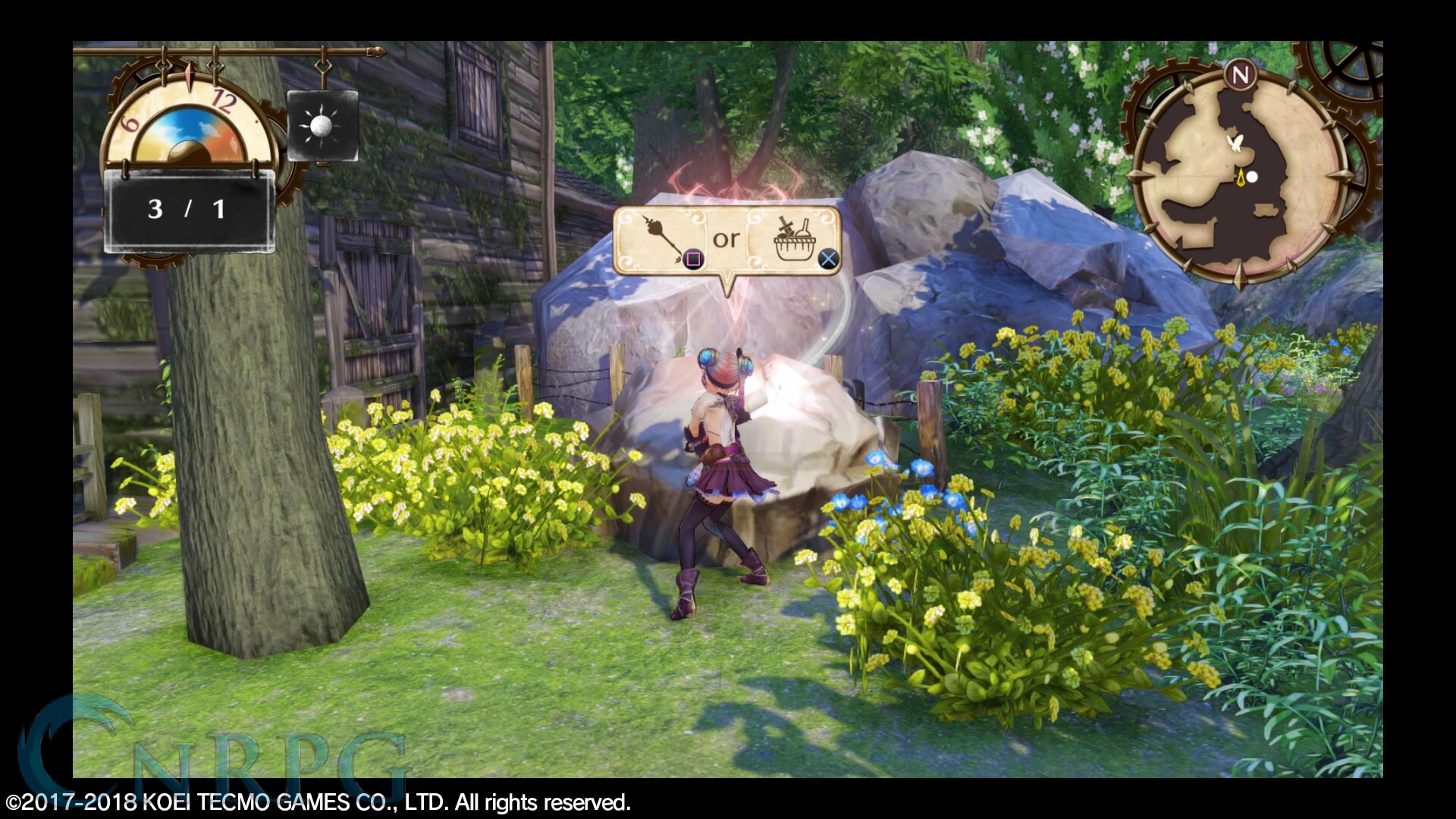
The Building Blocks of Society
Let’s get this out of the way quickly. You will be gathering a lot of items in Atelier L&S (name shortened for brevity’s sake!). You will be gathering a LOT of items. Gathering is one of the cornerstones of the entire Atelier series, so why should this one be any different? On every field and dungeon you visit, you’ll find countless gathering points, ranging from rocks and plants to monster nests and giant crystals. Every area in the game has its own forageable items, and the monsters in each area also have their own drops to take into account. As the game progresses, you’ll gain access to specialized gathering tools such as bug nets and fishing poles that further expand on your gathering potential.
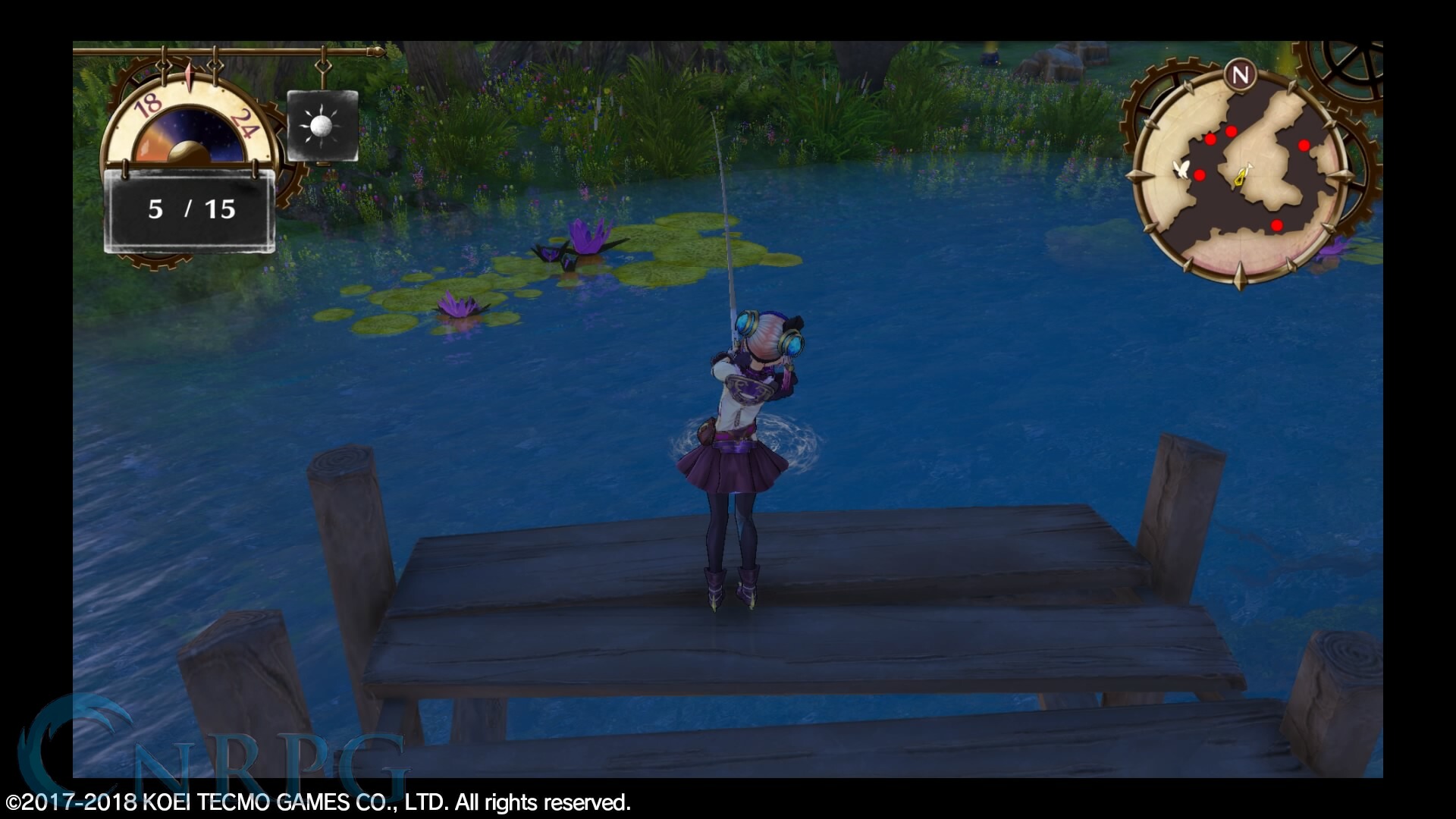
Each item you gather is associated with a variety of features. All items have a rarity, which determines its grade. Its grade, in turn, factors heavily on what components the item has — components are a key feature of crafting; I’ll discuss that soon. Finally, items can have attributes associated with them, also used in crafting. I’ve seen anywhere from zero to three per item. At the beginning of the game, however, you won’t be able to gather many items at a time before returning to dump your hauls in the atelier storage, which means you need to choose carefully what you want to gather versus completing any tasks you have in the area.

Alchemy Costs an Arm and a Leg
Crafting makes up the bulwark of Atelier L&S, so much so that new players to the series might get turned away almost immediately. Crafting is how you progress in the game. Crafting is how you make your party members more powerful. Crafting is how you heal. Crafting, in short, is life in this game. Lydie and Suelle start the game with a very rudimentary knowledge of how to perform alchemy, as evidenced by the simple items you can create at the beginning. Through the story, the twins earn the tutelage of Illmeria, a gifted alchemist who guides their growth. It’s around this time you gain access to the recipe book, which lets you learn new recipes through crafting older ones. Some recipes require a bit more work, however, requiring you to defeat specific enemies or gather particular items.
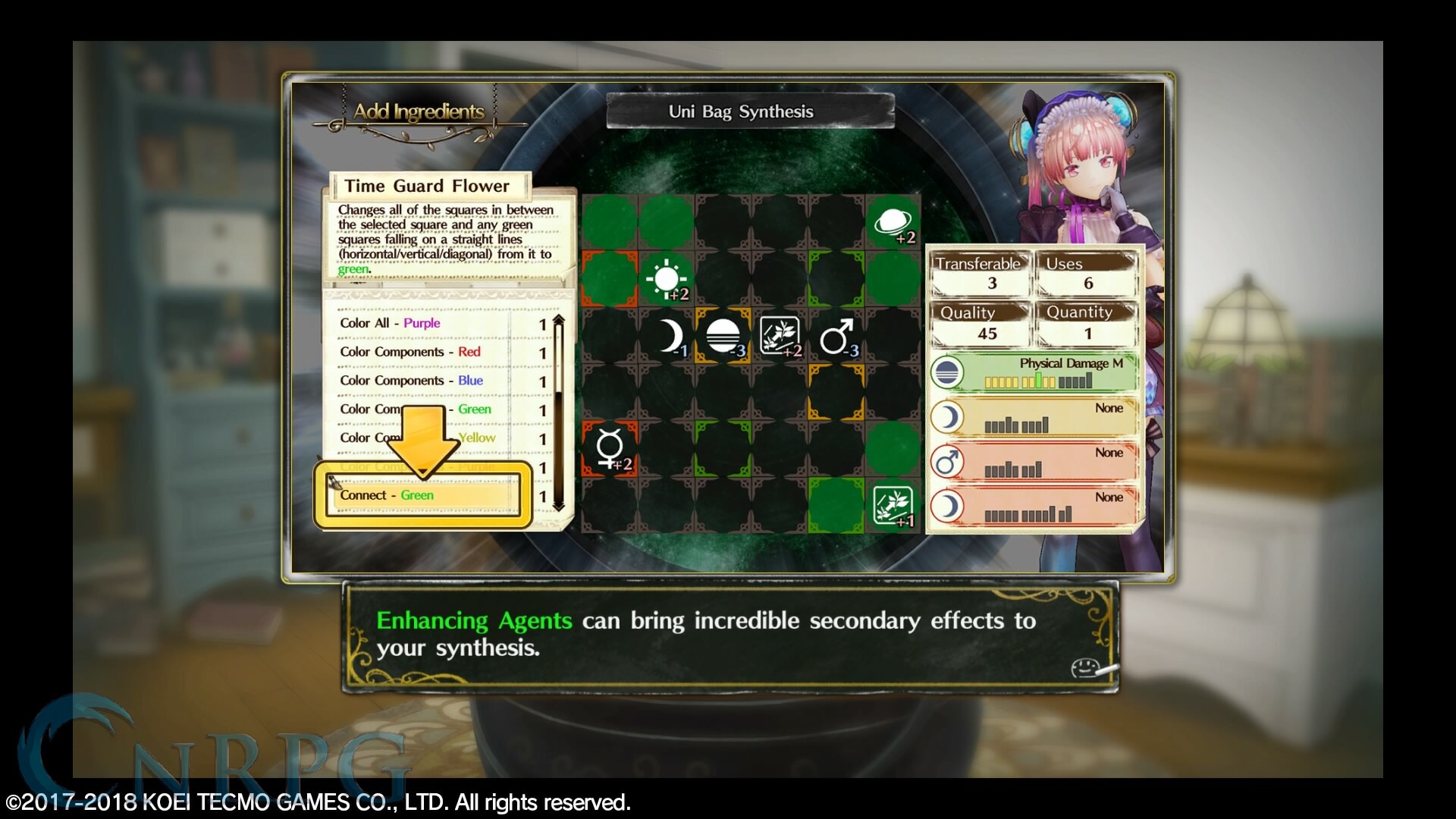
As expected, the further in the game you advance, the more complicated crafting becomes. The first addition comes in the form of catalysts.These items are there to add benefits beyond standard crafting. For example, some may help raise the maximum level of attributes (allowing an item that could only do medium damage to now be able to do a large amount), or adding additional effects to said item. This is done using the previously mentioned components. Each item has at least one color it can add to a recipe, and you arrange these colors — which have various patterns such as single pips to a 3×3 square — on the grid to raise the attributes of the item. If you raise a particular color past a threshold, that attribute becomes stronger. It’s honestly not an easy thing to describe; seeing it makes more sense.
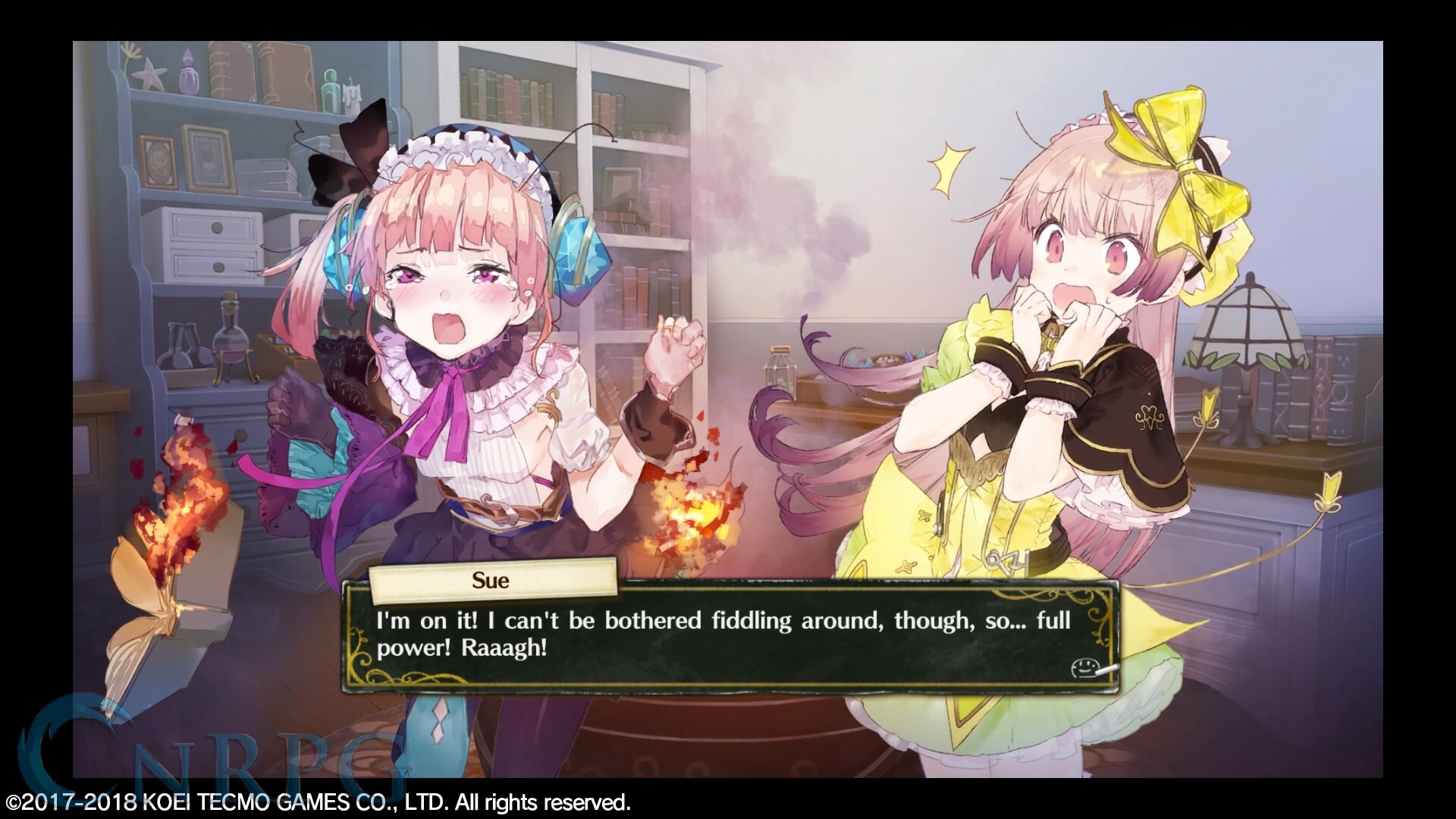
Even further into the game you’ll gain access to activators, which can have additional effects beyond catalysts. You can change the color of all tiles on the board randomly, or adjacent tiles a particular color, for instance. To say the crafting system in a game so focused on crafting is in-depth is a wild understatement. Did I mention you craft everything? That’s right, upgrades to your weapons and armor are also crafted. I played through maybe 33% of the game and still had the default weapons equipped, but boosted thanks to weapon crystals you can synthesize to boost whatever you need (less MP consumption was my personal favorite). Like I mentioned in the gathering section, you’re also responsible for making your own gathering implements, too. You need these items, since a lot of the items you craft require special materials those items provide.
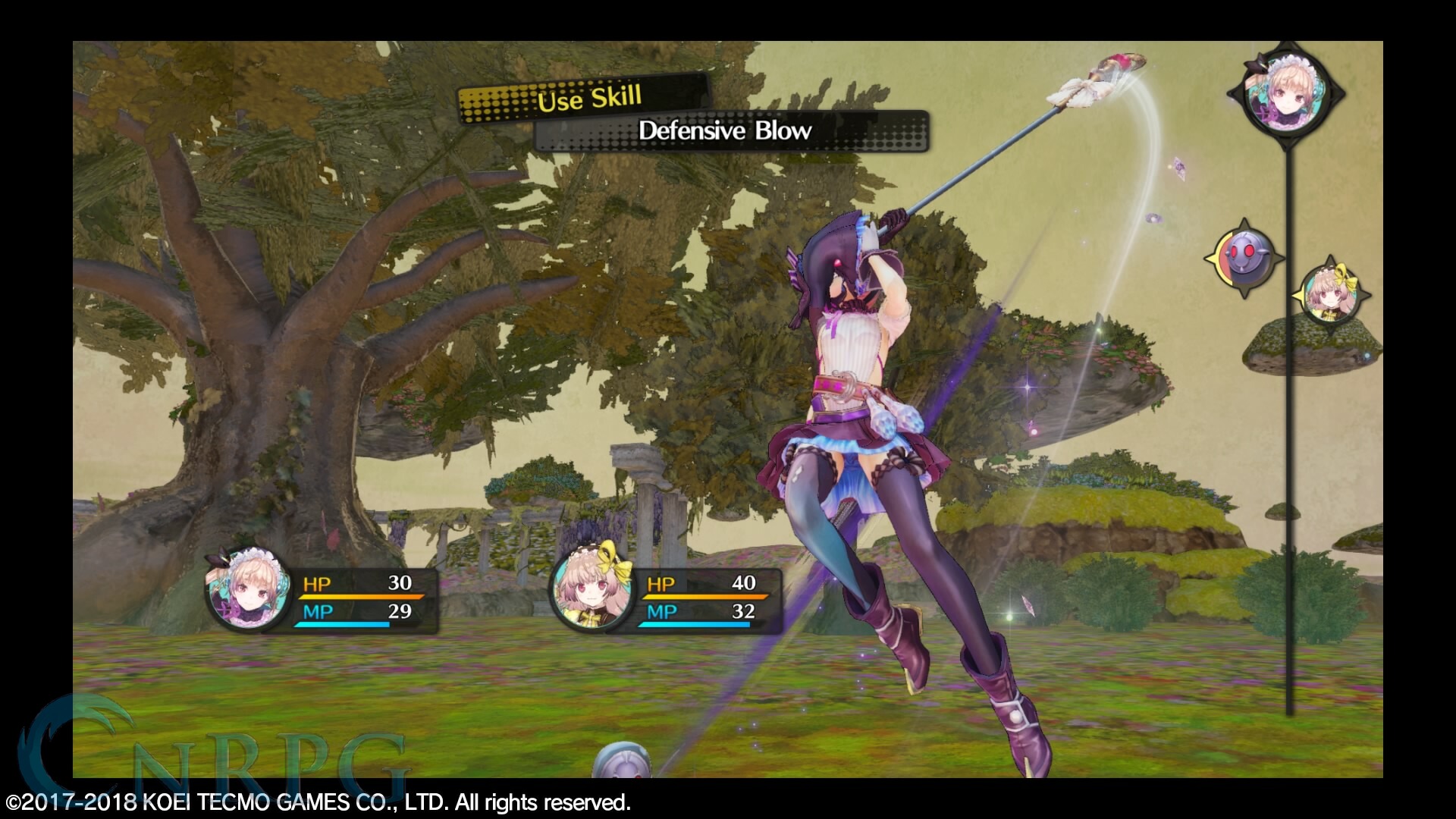
Even the Monsters Have Items!
Thankfully, combat in Atelier L&S is much less complicated than its gathering and crafting systems. Combat is turn based, with the order being determined by an action bar you’ll see on the right side of the combat screen. Each character has a standard attack command, and various skills useful in combat. Early on, skills are powerful, but their MP costs are rather prohibitive. That’s where the item command really shines. See, Suelle’s a passable combatant (she even dual wields guns because she thinks it’s cool — yes that’s canon), but Lydie isn’t what you’d call a combative powerhouse. Most of her skills are focused on support. However, thanks to the power of alchemy, you can craft tons of attack and support items. Most of your damage throughout a lot of the game is going to come through these consumable items. Keep in mind there is a limit to how many battle items you can take with you, so it’s good to prepare yourself with backups and healing items aplenty.
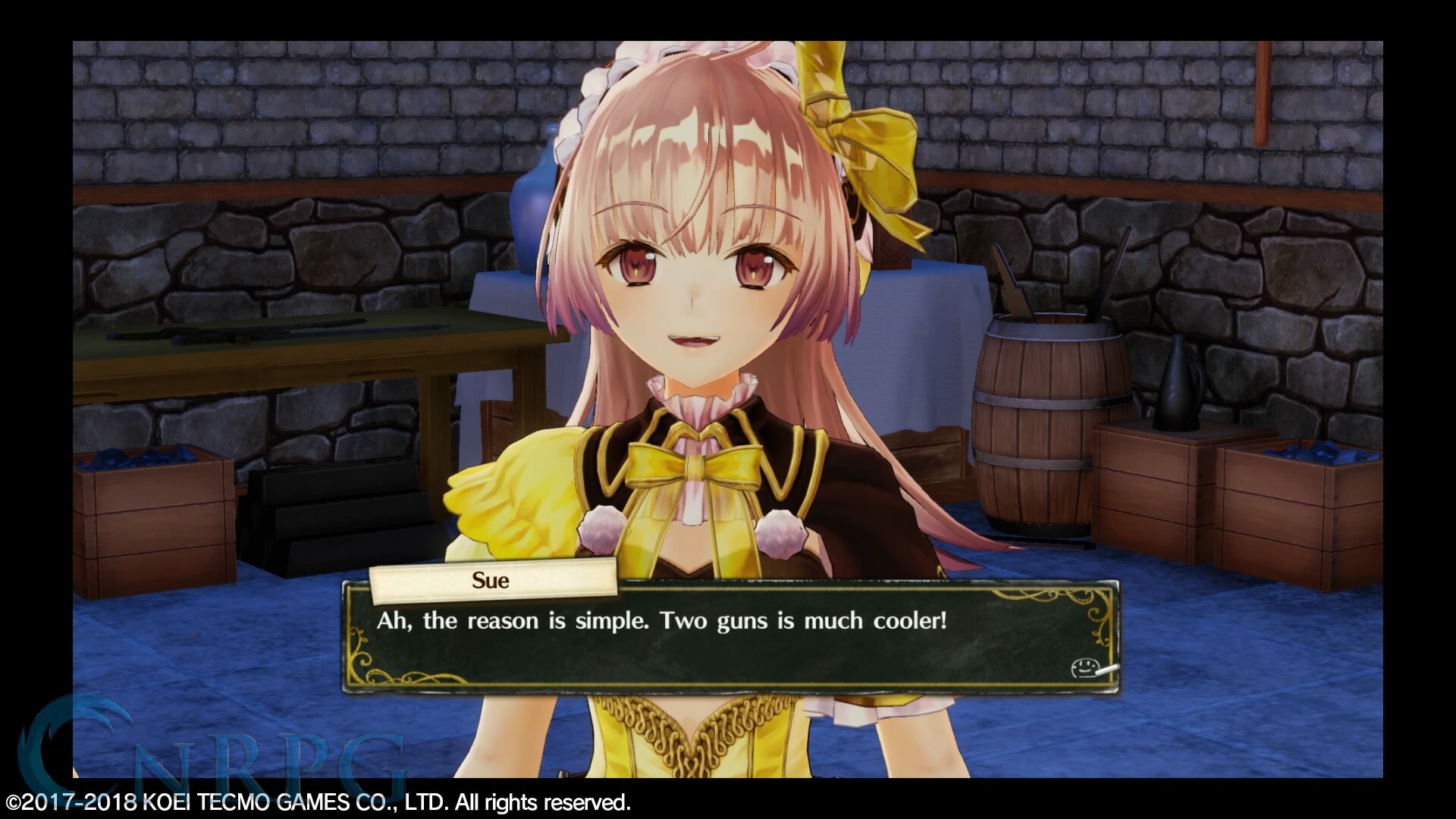
You’ll eventually be able to control three active party members in battle, though there are six total playable characters in the game. Active characters are your main three, responsible for most of the damage you’ll be inflicting. Characters not in the active slot are support characters, and they can be called into battle if you need a different one for strategic purposes. More importantly, these support characters offer what are called link skills, which trigger based on meeting specific conditions in a fight. Using Suelle as an example, if the character she’s supporting uses a skill, she will follow up with her own attack, linking the two together to inflict even greater damage. This is incredibly important when you realize how much health enemies have in the game, versus the amount of damage you can deal.

We Snuck Crafting in Your Main Story, Too
Without spoiling too much, the goal in Atelier L&S is straightforward: become the greatest Atelier in the kingdom. Simple enough, right? To do this, the kingdom has put in a ranking system, which budding young heroines like our twins can join to further their prestige. In fact, to raise your rank, you need to perform a variety of tasks related to making Lydie and Suelle better alchemists. These tasks include running random quests for people, crafting as much as possible, or beating up certain hapless monsters to prove your superiority. As you increase your rank, your monthly stipend of col (the game’s currency) grows, too. Along the way, various shops will open up to ease some of the crafting you’ll be doing throughout.
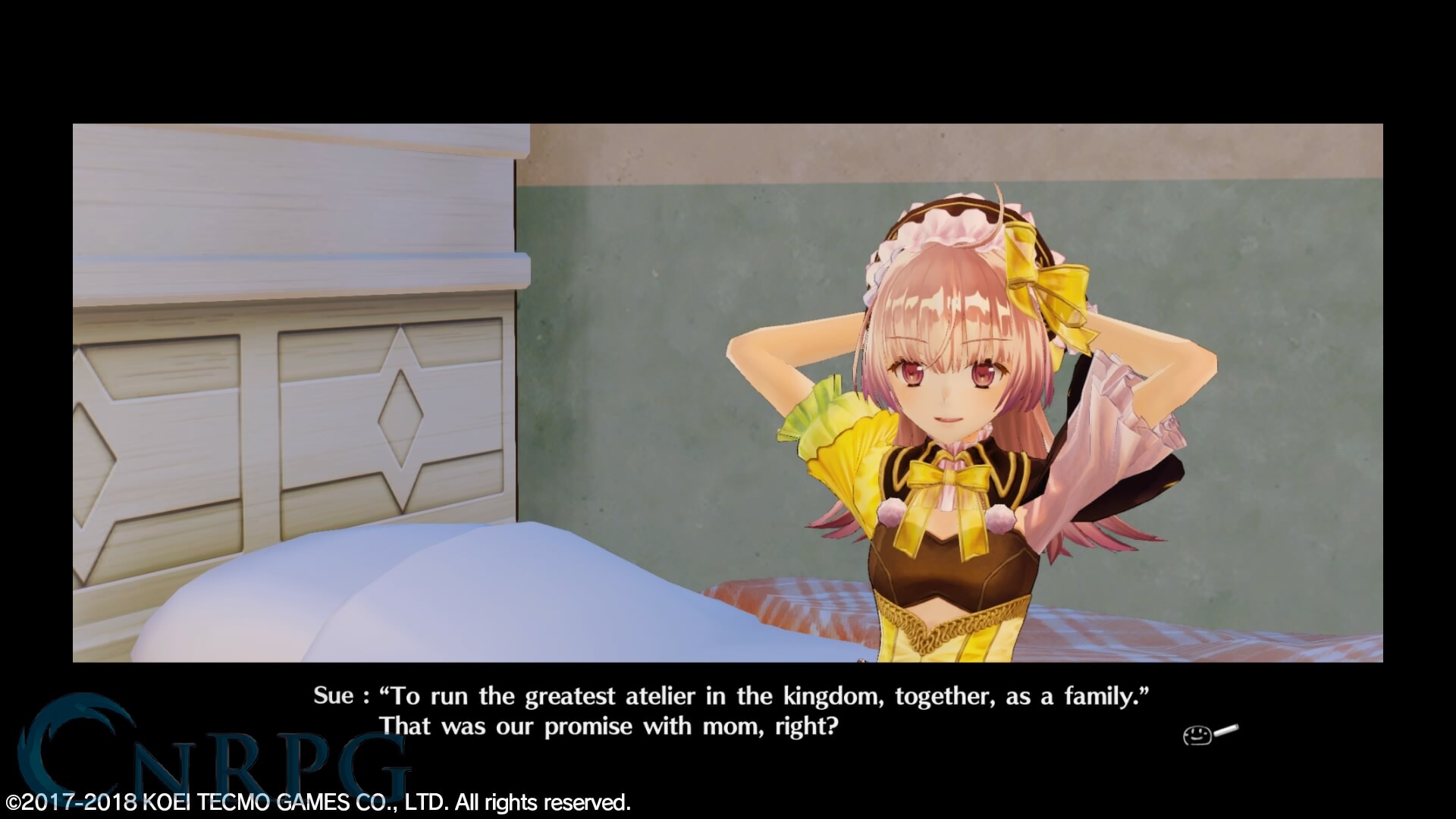
This also opens up the main focus of the story: the Mysterious Paintings ominously described in the game’s own title. As a reward, raising a rank allows the girls to enter a new painting each time, and as we’ve hopefully learned by now, new area means new items to collect for even newer crafts! It does serve as a pretty good measure as to how far you’ve gone in the game, as there are nine total ranks: unranked, then G to S. Yes, unranked somehow counts as a rank in this world. That means if you’ve achieved rank F, you’re likely around a third of the way through the game.
There are also a variety of random story snippets throughout the game. Most happen when you’ve crafted enough items in the atelier, but you can also see where additional ones occur using the map in game to hunt down the green exclamation points. These events offer various things from sidequests to character development, to the opening of new shops. While optional in the long run, these scenes are also very useful to get access to items before you’d be able to gather them in the wild. It also breathes a lot of life into the world, as many of the scenes involve characters from previous Atelier games.

Final Verdict: Good (3/5)
Atelier Lydie & Suelle was an enjoyable game for me, but there are some definite problems I found with the game. For most people, combat in an RPG revolves around attacking and skills, with occasional item usage. Atelier is more item usage foremost, followed distantly by skill usage and attacking. To wit, the first painting you gain access to feels like a huge difficulty spike because enemies have three times the health as your previous encounters (not to mention the addition of one being immune to physical attacks). Combat aside, the pacing of the game also feels very odd, with cutscenes happening while you’re trying to prepare for your next adventure, to not having any sort of idea of how far you’ve gotten other than the ranking. Finally, the recipe book is nowhere as clear as it could be. One of the first items you’ll have access to learn can’t actually be learned until you gain access to the second painting, even if you have the items it requires from the first one. There’s also the vastly polarizing decision to release the game with no English dubbing whatsoever.
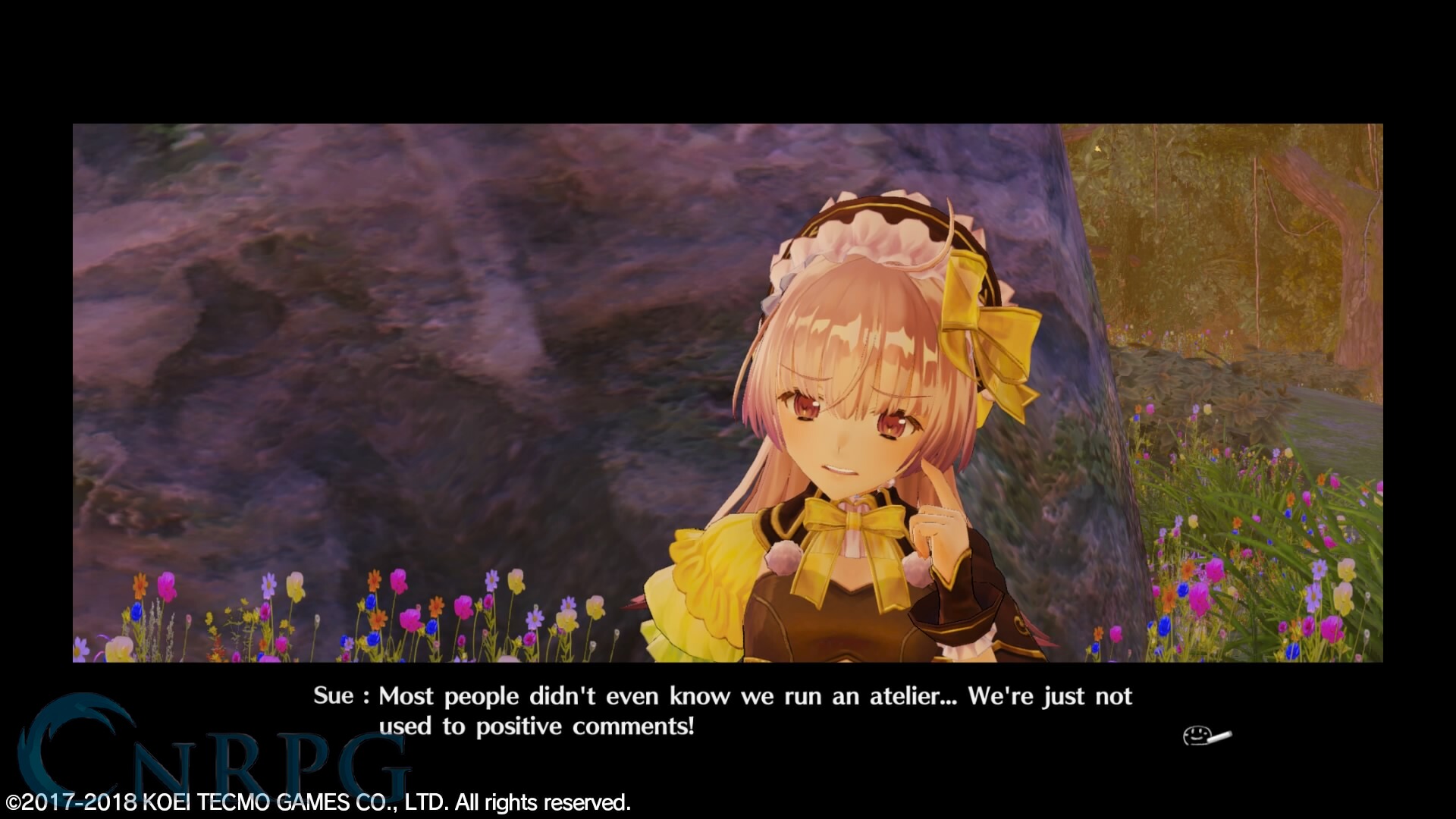
That being said, it is an absolutely adorable game. The antics of the twins caused me many a chuckle, especially when it involved their interaction with their father. The art style is colorful and bright, and the music is cheerful and warm, too. Once you’ve figured out the crafting system in full, battles actually become enjoyable. It also caters to veterans and newcomers alike in terms of story — vets will instantly recognize characters, and how much they’ve changed since their previous appearances. All in all, if you enjoy an RPG where crafting is the main focus, you’re likely to love Atelier Lydie & Suelle. Traditional RPG enthusiasts might need to be wary.
Oh, and because it needs to be said: barrel.
Note: A game key was provided for review purposes.
Atelier Lydie & Suelle: The Alchemists and the Mysterious Paintings Screenshots










































































































